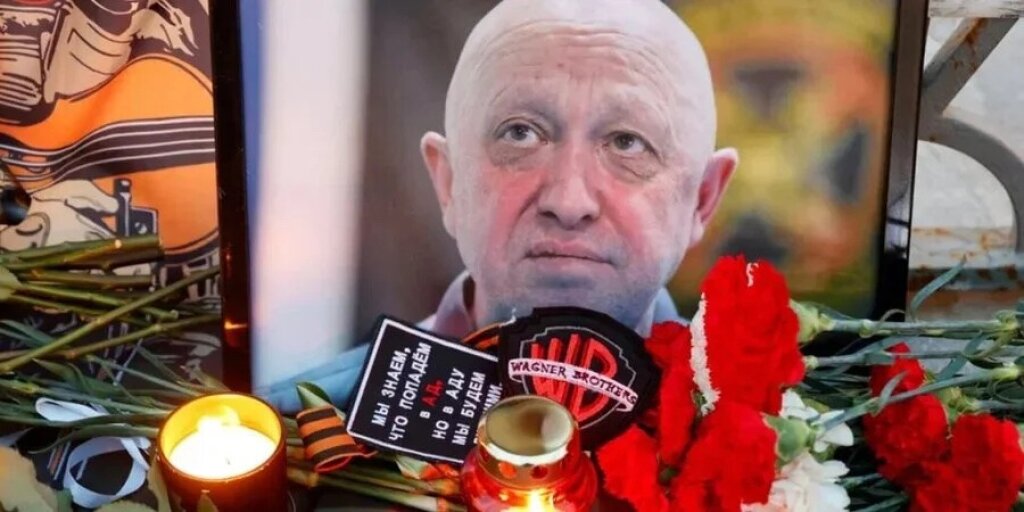Tyler Kirk is Associate Professor and Arthur T. Fathauer Chair in History at the University of Alaska Fairbanks. The following excerpt is reprinted with permission from his recent book, After the Gulag: A History of Memory in Russia's Far North. Published by Indiana University Press. © 2023 by Tyler C. Kirk.
In December 2021 the Supreme Court of the Russian Federation banned one of the country’s oldest human rights organizations – the International Memorial Society, which was founded in the late 1980s to commemorate the victims of Stalin’s repressions. Months later, in February 2022, Russia invaded Ukraine. Since then, the Putin regime has become even more repressive and intolerant of any dissent. The state now actively prevents the commemoration of the victims of political repression outside of prescribed avenues. Even those charged with managing the state’s own museum are no longer safe.
In January 2025, Roman Romanov, the director of the state-sponsored Gulag History Museum in Moscow, was fired for refusing to revise an exhibit about Stalin’s repressions in Moscow. The archive that Gulag survivors and their children built is now seen as a threat to the Putin regime because it challenges the state’s interpretation of the past by laying bare the crimes of the Soviet regime and juxtaposing them with the cult of victory of World War II, or the Great Patriotic War, the Soviet-era moniker used in post-Soviet Russia as a symbol of Russian nationalism and military might. However, despite the government’s attacks, a coalition of historians, museum curators, activists, residents, and family members of Gulag survivors loosely affiliated with Memorial continue to remember Stalin’s victims in the Komi Republic in Russia’s Far North.
Scholars and the public often focus on what happens in Moscow and St. Petersburg. However, when seen from the provinces the past looks different. The personal archives Gulag returnees donated to local history museums and branches of the Memorial Society in the late 1980s and 1990s that form the basis of my book, After the Gulag: A History of Memory in Russia’s Far North, call historians to re-examine how the so-called “victims of political repression” continued to shape the production of cultural memory in the provinces long after the national obsession with the past began to fade into the background following the collapse of the Soviet Union.
Why Komi?
From 1929 to 1958 hundreds of thousands of prisoners and exiles from across the Soviet Union were sent to the harsh yet resource-rich Komi Republic. Although it was the homeland of the indigenous Finno-Ugric Komi people, prisoners and exiles displaced the Komi when Stalin colonized the region with forced labor. To put the size of this project into perspective, six of Komi’s seven cities and most of its infrastructure were built by forced labor. While the density of prisoners, exiles, and penal institutions make Komi somewhat unique, the region is emblematic of other remote regions that became places of exile, imprisonment, industry and death during the operation of the forced labor camps, colonies, and special settlements that comprised the Soviet Gulag between 1929-1960.
When the survivors of Stalinist repression were finally given a chance to speak out in the late 1980s, and the scale of Stalin’s crimes and the Gulag started to come into focus, the region became known to local historians and residents alike as the capital of the “camp republic.” As the Soviet Union collapsed, former prisoners sent their autobiographies to Komi’s local branches of the anti-Stalinist Memorial Society and history museums in the hopes of telling their stories, which they viewed as inextricably connected to the land. Eventually, former prisoners, exiles, and their children, claimed the cities and infrastructure of the far north as monuments to their achievement and suffering.
Utilizing these previously unavailable personal records, alongside newspapers, photographs, interviews, and other archival sources, After the Gulag sheds new light not only on how former prisoners experienced life after release but also how they laid the foundations for the future commemoration of Komi's dark past. Bound by a “camp brotherhood” Gulag survivors used informal social networks to provide mutual support amid state and societal oppression. Decades later they sought rehabilitation with the help of the newly formed Memorial Society and contributed to the project of de-Stalinizing the Soviet Union. In sharing their life stories and family archives with Memorial, they sustained an alternate history of the Soviet Union.
A History of Memory
Understanding the function and construction of historical memory and identity are at the center of After the Gulag. Former prisoners constructed their memories of the Gulag and life after release in the context of their relationships with each other and with non-prisoners – indeed, even the definition of victim was dependent on this interrelationship. After the Gulag reveals how their autobiographical narratives informed the cultural memory of the Gulag in post-Soviet Russia during a period of turbulent change when Russians grappled with the painful chapters of their recent past in the hopes of building a democratic future.
Using the Komi Republic as a case study, it shows how this memory crystallized in texts, ceremonies, monuments, and civil associations in the Russian Far North. Examining this memory project in a unique regional context breaks the idea of a centralized national culture of memory and enables us to see the influence of Russia’s regions on Moscow. As those who bore the brunt of Stalinist violence and survived, Gulag returnees’ life stories collected by Memorial serve as the basis of a powerful, alternate version of Soviet history. It is an alternate history because its evidence is to be found primarily in non-state archives. This is also what made the historical narrative that emerged from these new archives so powerful - it was based on the details of the individual lives of thousands of ordinary Soviet citizens. Furthermore, these new testimonies expanded upon and went far beyond the memoirs and artistic representations of the camps published during the short-lived period of de-Stalinization under Khrushchev known as the thaw.
After the Gulag was, in part, a product of the Putin regime’s efforts to rewrite history by restricting access to documents on Stalinist repression. Although I found plenty of interesting documents in Soviet state and Communist Party archives, these sources told me very little about this history from the perspectives of former prisoners. When I discovered the richness of the archives of Komi’s local history museums, I began to realize that perhaps this was what the former prisoners I was searching for had intended. After all, they did not send their precious documents, photographs, and manuscripts to state and party authorities who were the heirs to the system that they testified against; they sent them to branches of the Memorial Society and museums in Syktyvkar, Ukhta, Sosnogorsk, Pechora, Abez’, Inta, and Vorkuta.
Offering an unprecedented look at the legacies of mass repression under Stalin, After the Gulag explores how ordinary political prisoners from across the Soviet Union navigated life after release, using memoirs, letters, and art to translate their experiences and shape the politics of memory in post-Soviet Russia. This study matters now more than ever because it reveals the possibilities and processes for revolutionary change in authoritarian societies and the importance of writing history from below.
Letters to Syktyvkar Memorial: “Who Will Remember If I forget?”
Peter Kotov wrote to the Syktyvkar Memorial Society in June 1990, a year after its establishment. In his first of several letters, Kotov identified himself as a former prisoner of Komi’s camps and asked what he could do to help. Kotov served nine years (1942–1951) in several camps in Komi, followed by seven more years in exile in Krasnoyarsk before being rehabilitated and returning to his native Poland in 1958. Once home, Kotov kept regular correspondence with his former campmates in the Soviet Union and wrote a memoir, which he sent to the Syktyvkar Memorial Society in 1991. A passage from his memoir perfectly encapsulates why Kotov, like so many other former prisoners, wrote autobiographical narratives about their experiences in the camps and shared them with Syktyvkar Memorial:
It is remarkable that the caves and ruins of the first people remain, but there are not any traces of the former camps for prisoners. And the prisoners’ cemetery was so [well] hidden that if you did not know, you would never guess that this was also a burial ground. . . . It is clear that after the liquidation of Stalin’s prison camps, their creators and guards quite intentionally erased their traces, completely understanding that they committed crimes. Moreover, our duty, the responsibility of former prisoners of the Gulag who remain alive, consists in, to the degree possible, trying to raise from the dead the memory of what we lived through, to revive the memory of those people who remain forever in the hidden graves. As much memory is in a person, is as much humanity is in him.
Many former prisoners who wrote to Syktyvkar Memorial echoed Kotov’s sentiments: survivors had a duty to remember and record the evidence of the system of mass repression that once spanned the Soviet Union. In 1989, a former prisoner wrote from a small village in Komi to Syktyvkar Memorial, “My life is an entire book, and it’s a shame that no one is interested while witnesses are still alive—after all, the dead don’t speak.” As shown in the extensive correspondence between Syktyvkar Memorial and Gulag returnees, there was no shortage of interest in preserving their memories—evidence of Komi’s unwritten history as one of the largest islands of the Gulag archipelago.
The flood of letters that Syktyvkar Memorial received from former prisoners raised many questions but also provided important insights into what motivated Gulag returnees to write after decades of silence. They showed what former prisoners revealed about themselves once they opened the floodgates of memory and how they defined themselves when finally given the chance. Nevertheless, this correspondence also sheds light on how the information they provided affected the memory project to commemorate the victims of political repression.



